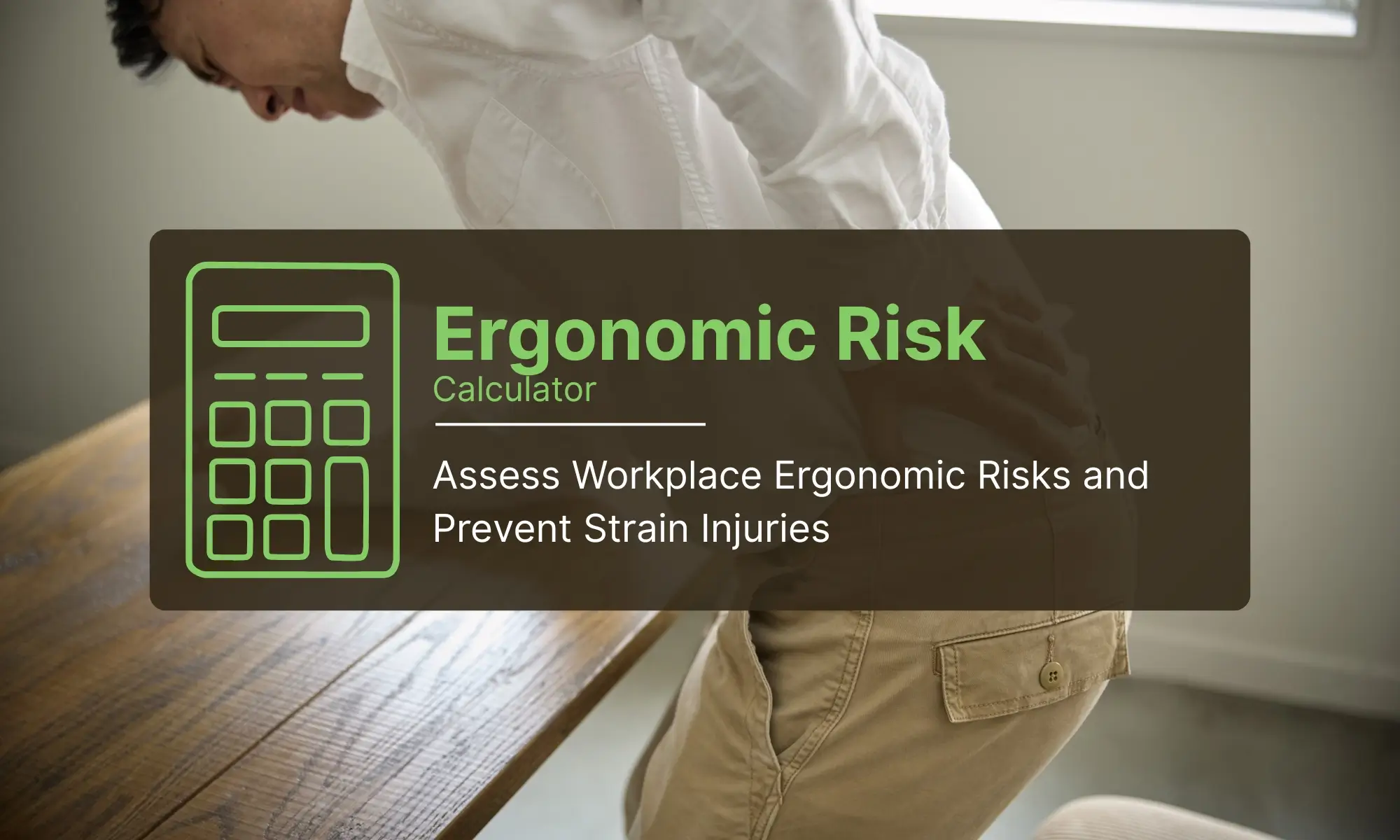Ergonomic Risk Calculator (NIOSH Lifting Equation)
What is Ergonomic Risk?
Ergonomic risk refers to the potential for injuries or disorders caused by poor design of workstations, tools, or tasks that require repetitive motion, awkward posture, or excessive force. These risks can lead to Musculoskeletal Disorders (MSDs) such as carpal tunnel syndrome, back pain, or tendonitis.
The Ergonomic Risk Calculator helps assess the level of ergonomic risk associated with specific job tasks. It provides a structured way to identify and reduce hazards before they lead to injury.
Why Use an Ergonomic Risk Calculator?
Using this tool can help organizations:
- Identify high-risk tasks early
- Evaluate posture, force, and repetition in job roles
- Recommend ergonomic improvements to reduce strain
- Support health & safety compliance
- Improve worker comfort and productivity
Benefits of Ergonomic Risk Management
- Prevent injuries and reduce compensation claims
- Improve task design for comfort and efficiency
- Support long-term worker health
- Reduce absenteeism and fatigue
Example Assessment
Suppose a task involves:
- High repetition (e.g., using a mouse for 6 hours/day)
- Awkward wrist posture
- Low applied force
The tool may classify this as a moderate ergonomic risk, suggesting redesign of workstation layout, keyboard height, or scheduled micro-breaks.
Key Ergonomic Risk Factors
The calculator typically evaluates:
- Posture: Awkward or sustained positions (e.g. bent wrists, reaching)
- Repetition: Frequency of repeated motions per minute/hour
- Force: Amount of physical effort required to perform a task
- Duration: How long a task is performed without breaks
- Vibration: Exposure to hand-arm or whole-body vibration
- Contact Stress: Pressure from tools, surfaces, or sharp edges
These factors are rated and combined to generate an ergonomic risk score, indicating whether the task is low, moderate, or high risk.

